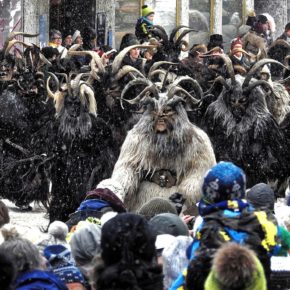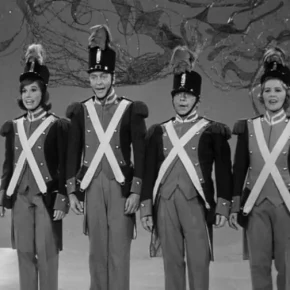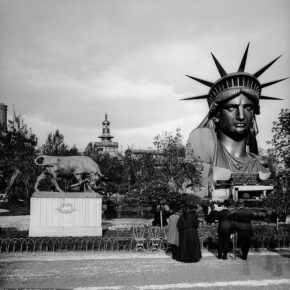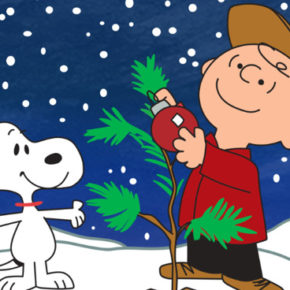Activity: road cycling (special event)
Location: Lenoir, NC > Linville, NC > Grandfather Mountain, NC
Distance: 101.4 miles (very hilly over the last 50 miles)
Duration: 5:48 (5:46 rolling time – data here)
Weather: cool, damp, foggy, rainy, 59-68 degrees
Climbing: 8,590′
Avg HR: 151 (max 178)
Type: aerobic
Given my injury earlier in the year, I had to cancel my plans to ride the Death Ride in July. so, in the search for another “bucket list” ride to conquer, the 24th Bridge-To-Bridge Cycling Challenge entered my mind. So I entered, I got Chris to join me, and we took on this beast of a ride.
Lenoir is a town that seems to be in transition. Old industry has died off. Hulks of old factories and warehouses sit in lonesome decay. Downtown wears shadows of a former life: the shuttered movie house, the old department stores with boarded-up windows.
But there is a rebirth beginning to show. Main Street has a variety of new stores. A wine-focused bistro fills its tables every night. Craft stores and coffeehouses have loyal clientele. These customers may work at one of the new data centers that are taking over some of the old industrial spaces in and around town.
The people are friendly. They smile at you and say hello. They ask you, with all sincerity, how you feel, how the day has gone, and what’s new in your world. It doesn’t matter if they’ve known you for 2 minutes or 20 years – they treat you like you belong.
For a few hundred cyclists, many of whom are somewhat local and some of whom traveled from points far from Lenoir, it was a perfect introduction to the town, and perhaps a way for the locals to say to themselves, “these riders must be crazy.â€
Our agenda, after all, was to ride 101 miles, ending our journey atop Grandfather Mountain in the Appalachian Range. The final 51 miles featured most of the climbing – a back-loaded affair, and very daunting on paper.
In real life, it was every bit as challenging as promised – and somehow, a lot easier to handle than other challenge rides I’ve completed.
Chris and I arrived on Saturday, the afternoon before the ride, after a six-plus hour drive from the DC area. The drive was uneventful – most drives on Interstate highways are – and allowed us a chance to size up the hills as the Appalachian Range became a constant driving companion: up and down, flirting with the Blue Ridge Parkway and the Eastern Continental Divide.
After pulling into Lenoir, we immediately found Main Street and a street festival the town held for the cyclists. Food was a focal point: pasta, salad, bread and barbeque created a lovely mix of fuel for the next day’s miles. Local vendors, part of a weekly farmers’ market, sold their wares alongside children riding strange tricycles and bicycle variants. There was local beer. Volunteers mingled with cyclists. Chris and I enjoyed our dinner with a couple whose charge was the fourth aid station along the ride route. They thanked us for coming all the way from DC for their “little bike event.â€
After eating, signing into the ride, picking up our number packet, and buying the lovely event jersey, we checked into our motel. The management of the Days Inn was warm and welcoming, and the room was basic and comfortable. Seeking out Mexican food (my preferred pre-event fuel), we made our way to a great little place with honest-to-goodness Mexican (not the typical Salvadoran) food, hit up a grocery store for breakfast food, and returned to the room around 9pm to prep our bikes and get some needed shut eye.
The next morning, we awoke before dawn – after all, the ride started at 8am, and we needed time to wake up, eat breakfast, and ride the short, 1 mile commute to Main Street. It was damp, foggy and misty outside, a sneak preview of what the day held in store.
I had to decide what clothing to take with me. It wouldn’t get especially warm today, so long as the mist, fog and clouds clung to the mountain ridges. I decided to wear my SmartWool PhD socks*, which are excellent in all conditions, wet or dry (and I anticipated some wet tarmac along the route). I packed my wool arm warmers in my jersey pocket, and donned a vest for the ride to town, unsure whether I would want to wear something so substantial once I was riding with the pack. I opted against wearing knee warmers, as it wasn’t that cold in the morning. My clothes pack contained clean, non-cycling clothes, and eventually held my vest.
Chris and I arrived at Main Street 35 minutes prior to start time – early for both of us. The ride is chip-timed (i.e. they use little timing “chips” to measure elapsed time on course), so we made sure to affix our chips onto our shoes after arriving at the start area. It wasn’t too difficult, though the chips were clearly designed to be attached to running shoes with laces, rather than cycling shoes with velcro straps. Regardless, we worked out any problems, and dropped off our bags with clean clothes for transport to Grandfather Mountain.
I rode a few laps around the closed streets of downtown Lenoir, snapping a few pictures of their current state of urban rebirth. I wasn’t in a particularly good mood – I somehow felt a bit off, but was willing to shrug it off as an anomaly. After around 15 minutes of warm-up riding, Chris and I took our places in the start pen.
A cornucopia of multi-colored bike jerseys were sardine packed into the start area. Local teams all amassed at the front, treating this event ride like a full-on race. Clubs from North Carolina queued up behind the teams, hoping to test their mettle. Chris and I, in our non-club kit, planned to seek out some fast riders – not racers, per se, but fast, smooth riders who would ride a good tempo until the rode tilted up at mile 51.
Pre-ride announcements were broadcast on the PA. A local country radio DJ was the honorary starter. A local official said a prayer. The rules of the road were spoken, though hardly audible over the din of hundreds of Garmin bike computers being clicked into action, anticipating the start.
And at 7:56am – a whopping four minutes early – the 2012 Bridge-to-Bridge Cycling Challenge commenced. The sound of gears shifting, chains whirring, and “on your left” could be heard up and down Main Street.
The crowd was thick at the beginning, with everybody on guard to avoid a crash, as well as to find the right group of riders with whom to collaborate. The racers, as expected, took off as if they had a plane to catch, and Chris and I ended up in a fast-but-not-insane peloton that fell just behind the racing pack. It felt right, so we forged on.
One of the wonders of Bridge-to-Bridge is that most of the intersections over the first 40 miles were controlled by police officers. So we were able to continue, no breaks in momentum, through busy intersections. And while the typical DC attitude to such things would be scowls, shouting, horn blowing and tantrums, the locals in North Carolina seemed to welcome us with open arms: cheering, smiling, ringing cowbells and making us all feel like we were in a grand tour. It was amazing.
And my feeling of unease quickly morphed into a feeling of contained power: I felt strong on the bike, able to accelerate with ease. Our peloton settled in initially as a group of 50, then 40, then eventually 20 to 25. Only a handful of us seemed to take turns pulling on the front, as not all were willing to put in extra effort to keep the pace up. But most of us shrugged it off, as the hills would arrive soon enough.
If anything, the weather – which, to this point, was a mix of overcast, damp, and fog – worked in concert with the closed intersections to allow me to excel. Keeping up a consistent momentum helped regulate my energy expenditure, allowing me to conserve a lot of fuel for the climbs while maintaining a 22 mph clip. I never felt a need to stop to get more water or food. The aid stations also contributed to this, with volunteers lined up along the road offering food and drink without the need to stop. This was one of the hallmarks (among many) of the excellent organization of Bridge-to-Bridge.
While the first 50 miles were lovely, lightly rolling country (truly ideal riding terrain for most cyclists), the latter 51 miles had a different side. And with a right turn onto Route 181, the road tilted up. And up. And up.
The climb on 181 is a long grind, averaging 8 percent grade with sections approaching 13 percent. It is long enough to separate those with good climbing legs from those who would have a tough time throughout the day. A local rider, Adrian (a Swiss expat), explained to me that the road has a few false summits, and that I should treat the Blue Ridge Parkway crossing as the true summit of the climb. Message understood, he followed that up with sage advice that I try to follow on every ride: “ride your own ride.†In other words, don’t try to follow anybody’s lead, know your body and its limits.
My body was saying “let’s get this thing ON!â€
I dropped the majority of the peloton on 181. Chris fell behind, unable to keep up with my pace. I ended up in a group of 8 riders, all of whom seemed to be doing this thing non-stop, which increasingly became the approach I took. My only annoyance was a slowly building need for a “nature break,†but it wasn’t that bad, and I kept taking on fluids and food without it causing any more bother – why stop?
I reached the Blue Ridge Parkway crossing with a lot of pep left in my step. The fog kept rolling in and out, and brief (as in 10-20 second) glimpses of sun added contrast. The traffic, as it was, didn’t bother us much: they were courteous and gave us wide berth. People sat on their porches and cheered us on. Dogs were on leashes, likely thinking “what is up with this?†The road dipped downhill for a while, the pavement damp due to the fog and mist. Grandfather Mountain rose to our right, shrouded in clouds. Linville lay ahead, behind it an extremely dark, foreboding cloud wall. The freshly-wet roads were its calling card.
We stopped at a traffic light (the only time we had to all day), and two of our ranks decided to make the very stupid decision to run the light. They were almost broadsided by a SUV, and the rest of us kept our distance, glad it wasn’t us who got impatient with a 25 second stop for three lights on a post.
As we turned off of Route 211 (which would have been a shortcut to Grandfather Mountain, albeit an extremely steep one), we rode smack into the dark cloud wall. At mile 71, the deluge began.
The rain was hard and pelting. Some of the drops stung. Most of us had lights, which was a good thing, as the road spray created a situation that seemed risky, even though the roads were wide and the traffic kind. This was one of the busiest roads of the day, and we were all grateful to make the right turn onto Shull’s Mill Road.
For all the bustle, commercial buildings and open territory that our previous 7 mile stretch held, Shull’s Mill was anything but. The tree canopy enveloped us and shielded us from the hardest rain. The road was narrow and winding, with a 6 to 8 percent grade feeling far gentler than it was. The group shared a few laughs as we enjoyed a little slice of cycling heaven, climbing toward the ridge and the possible traverse along the Blue Ridge Parkway toward Grandfather.
But as we emerged from Shull’s Mill, the fog closely resembled that of Sherlock Holmes lore: thick, yielding to neither sun nor lantern. Approaching the on-ramp to the Blue Ridge Parkway, riders were directed to stay on Route 211, which was more undulating, if a bit flatter than the Parkway, albeit with more foliage, more rain, and less fog.
By this point, all of the riding in rain had caused my freehub to start making some grinding noises when I wasn’t pedaling. The water and road grime had found its way inside (I would later learn that my freehub had cracked at some point during the ride – ouch!). But it didn’t deter me, and I kept up a steady clip through the rainy deluge toward Grandfather Mountain.
By mile 95, though, I started seeing yellow – I needed a nature break. Fortunately, at mile 97, an aid station beckoned, free of most riders and featuring a most welcome port-o-let. I went inside and let forth a stream that seemed to last forever, but only lasted about 90 seconds. During that time, the aid station volunteers topped off my water bottle – very nice.
I got back on the bike, unencumbered by bladder complaints, and as I approached the turn to Grandfather Mountain, I let out a loud “WOO-HOO†to the state trooper who was flagging cyclists onto the road. He laughed, smiled, and cheered me on.
The climb to Grandfather Mountain is exactly two miles from 211 to the summit. This road is only open to cyclists one day per year: for the Bridge-to-Bridge Cycling Challenge. So I knew that it had to be something special. The elevation profile is daunting: it opens with a 12-13 percent kicker, which leads to a flatter section at 5-8 percent that goes on for 300 meters, allowing some respite as you view the field where the post-ride party takes place. The road then kicks up with ramps of 16-18 percent, testing your mettle, followed by a short, false flat of 200 or so meters.
And then it just. goes. up. The last 2/3 mile is foreboding. The road never dips below 13 percent. There are switchbacks and kickers that touch 18 to 19 percent. And the final 400 meters averages a steep 20 percent grade – no margin for error in terms of losing traction. Add into the mix the fact that the mountain was shrouded in fog and drizzle, and the whole thing seemed like something lifted from Lord of the Rings.
I realized that I still had a lot in the tank at this point: the legs showed no signs of cramp, my feet didn’t bother me, my back was fine, my mind was sharp. I passed two riders on the initial ramp, after the guard station. I passed another 5 or 6 in the flatter section after that, and another rider at the next kicker. One of these riders had number 666, so I said, “hola, El Diablo!†as I passed him. In his tired state, it took him a few seconds to make the connection.
All the while, I also passed a few riders who had stopped and pulled over. A couple were doubled-over in pain. One was violently emptying the contents of his digestive system on the side of the road, having cashed a larger “physical check†than his body could fund.
I simply soldiered on, sitting in a powerful, if not overly rapid, spinning cadence. The photos taken by the official event photog (stationed about a mile from the finish, near Split Rock) show me at relative ease, which was the case.
As I approached the switchbacks leading to the finish, the fog thickened, and I could hear the first sounds of the finish line: the cheers, the cowbells. I passed another rider on a 16 percent ramp, and another in the turn leading to the final stretch into the finish. Where a rider in front of me was tacking his bike up the ramp, I rode a straight, purposeful line to the top – which I still couldn’t see, due to the fog. Eventually, the shapes of the people and the summit station came into focus. My legs kept pumping rhythmically, moving me up the steep ramp, tires gripping the wet pavement. I reached the top of the ramp, made a hard, right turn to the timing mats, and was done.
I didn’t make note of my time, even though I stopped my Garmin unit and my Cateye computer. I made a quick move toward the food table, where I drank approximately 20 ounces of Coca-Cola (the first Coke I’d had in a month, if not longer), ate grapes and peanut butter sandwiches, and finished my still-mostly-full water bottle.
And I wore a smile that seemed like it was a mile wide.
I didn’t know how far back Chris was, given I hadn’t seen him since mile 40 or so. So, after handing my bike to one of the Boy Scouts who were helping with the ferry down to the field, I explored the top of Grandfather Mountain park. To fight the chill, I donned the wool arm warmers that I’d carried with me in a jersey pocket for the entire ride. My change of clothes was down the mountain, so I had to make do walking in my bike shoes – not ideal, but workable.
I cheered on fellow cyclists as they finished. I climbed up the stone stairs to the swinging bridge between two crags of the mountain. The mist truly made this place seem like Tolkien’s Misty Mountains, and when the cloud layer briefly cleared, the view of the town of Grandfather was lovely, indeed.
Chris eventually came across the line around an hour after me, having suffered a flat tire on the Shull’s Mill climb. He was happy with his ride, as well.
Positives:
+ Excellent ride organization, with great people running everything
+ Excellent support at the aid stations
+ State police controlling all intersections from the start until mile 40
+ Locals who turned out along the entire course, cheering all riders
+ The camaraderie of the riders, who all seemed to be of similarly friendly persona
+ The pre-ride street fest was awesome
+ The post-ride picnic and BBQ were top-notch
+ The finish on Grandfather Mountain – how could that not rock?
Negatives:
+ The long wait for a shuttle back to Lenoir – a bigger bus might work better than smaller vans paired with moving trucks
You can see all of the pictures I took over the weekend by clicking here.
* – I am a SmartWool Athlete Ambassador, so this could be considered an endorsement of their product – and I love the PhD socks!















Comments by randomduck
virtual advent 2020: a fab holiday (and it’s been 40 years…)
@compassionknit: I think the issue is that John had Julian ...
ten on tuesday: the music died too young
Good call on those three!
my 30s: a look back
Thanks, Darren and Jeff! Jeff, riding along the California coast with ...